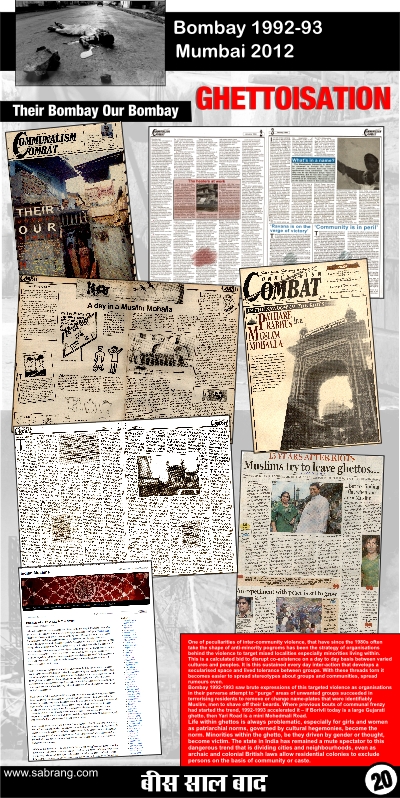
Ghettoisation
One of peculiarities of inter-community violence, that have since the 1980s often take the shape of anti-minority pogroms has been the strategy of organisations behind the violence to target mixed localities especially minorities living within. This is a calculated bid to disrupt co-existence on a day to day basis between varied cultures and peoples. It is this sustained every day inter-action that develops a secularised space and lived tolerance between groups. With these threads torn it becomes easier to spread stereotypes about groups and communities, spread rumours even.
Bombay 1992-1993 saw brute expressions of this targeted violence as organisations in their perverse attempt to “purge” areas of unwanted groups succeeded in terrorising residents to remove or change name-plates that were identifiably Muslim, men to shave off their beards. Where previous bouts of communal frenzy had started the trend, 1992-1993 accelerated it – if Borivli today is a large Gujarati ghetto, then Yari Road is a mini Mohedmali Road.
Life within ghettos is always problematic, especially for girls and women as patriarchial norms, governed by cultural hegemonies, become the norm. Minorities within the ghetto, be they driven by gender or thought, become victim. The state in India has remained a mute spectator to this dangerous trend that is dividing cities and neighbourhoods, even as archaic and colonial British laws allow residential colonies to exclude persons on the basis of community or caste.